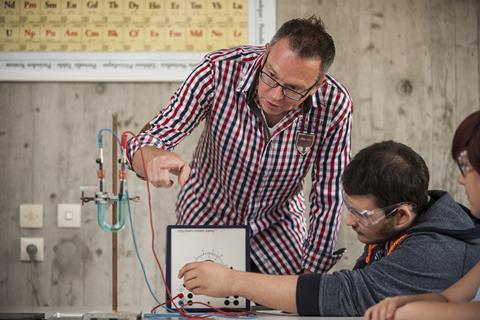Current research points to the role of clear explanations in detailed understanding

No discussion on the concept of electrochemistry would be complete without the electrolyte. A seemingly innocuous entity with the potential to spark much confusion amongst students.
The challenge lies in the number of different concepts that require simultaneous attention: ionic bonding in a solid electrolyte; dissolution of an ionic substance; the covalent bonding in water; motion of ions to give rise to current. Not to mention the flow electrons in the metal wire … there might even be graphite rods or pieces of electrolyte-soaked filter paper to contend with. And let’s not even get started on how a battery works …
Conducting interviews
In a new study, researchers from China have investigated how students’ think about the way electrolytes work within electrochemistry. They interviewed eight high school students aged 15–16, across four different achievement levels, as part of a phenomenographic study. This type of approach seeks to form descriptive categories, representing the differing degrees of understanding held by students.
The interview questions included those designed to demonstrate the students’ understanding of electrolytes, in particular the origin of the electrolyte’s conductivity.
Four categories emerged to describe the students’ understanding, A-D, where each is subsumed by the next. These are:
- Category A – an electrolyte is matter that can conduct electricity in solution.
- Category B – an electrolyte is a compound that produces ions in water to conduct electricity.
- Category C – an electrolyte is a compound made of a cation and an anion and ionises in water by interacting with water molecules to conduct electricity.
- Category D – an electrolyte is a compound made of ions with electrical charges and can conduct electricity when it ionises in water.
Students in categories A or B tended to have their understanding of electrolytes dominated with macroscopic thinking, resisting providing any microscopic level to support their explanations. Furthermore, the misconception that ionic compounds are molecular was persistent.
In contrast, students in categories C or D tended to present a more well-developed microscopic level of thinking in their explanations. However, even though these students could explain the process of ion formation in electrolytes, they found it difficult to articulate how these ions could participate in the generation of current.
Teaching tips
It is clear that a detailed understanding of the microscopic properties of matter helps students to understand the properties of electrolytes. This study provides some helpful support:
- This framework of categories could be a useful tool to diagnose the level of understanding students already have, providing a starting point for further development. Within the paper, the authors also present possible pathways that exist when students alter their understanding as they progress through the categories. This could help target certain concepts that would help students to progress their understanding.
- The study’s interview questions make a good exercise in conceptual understanding of electrolytes. Without much alteration, they could be used as a formative assessment.
- Before tackling electrolytes for the first time with students, it would be helpful to revisit the microscopic explanations of all prerequisite concepts of structure and bonding. Diagrams detailing the microscopic situation are essential.
- During the course of explaining electrolytes, it is important to explicitly contrast conduction in metals with conduction of electrolytes in solutions, to avoid any misconceptions.
References
S Lu, H Bi & X Liu, Chem. Ed. Res. Pract., 2019 (DOI: 10.1039/c8rp00125a)














1 Reader's comment